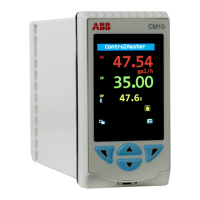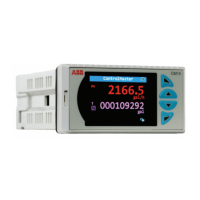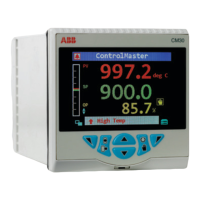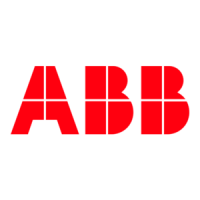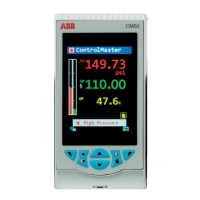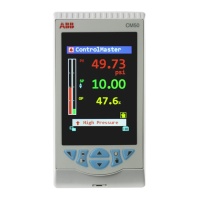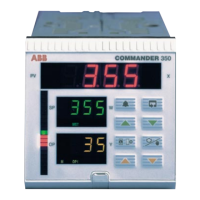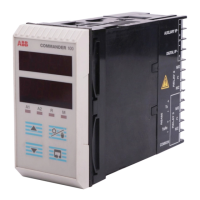ControlMaster CM30, CM50 and CMF310
Universal process controllers,
1
/4,
1
/2 DIN and fieldmount 7 Advanced Level
48 IM/CM/ED–EN Rev. X
…Control / …Loop 1 (2) Setpoints / …Select Sources
Remote Select The source required to select remote setpoint mode
(or remote ratio) mode.
Loc/Rem Toggle The source required to select either local or remote
setpoint mode. This source is level-triggered.
A low signal locks the controller in local setpoint mode
and a high signal locks it in remote setpoint mode. The
edge-triggered local and remote selection sources and
the front panel keys do not operate when this function is used.
If the remote setpoint fails while selected using this digital selection and the RSP Fault Action
parameter is not set to No Action (see page 47) the mode changes to Local.
As soon as the remote setpoint is no longer in a failed state it reverts to remote mode (if it is
still selected by this function).
Loop 1 (2) Control
Overview
Loop Control configures the basic type of control required and the PID and Autotune settings.
The controller can be configured to perform different types of control:
On/Off Control – see page 49
Simple 2-state thermostat-type control with configurable hysteresis to prevent wear on the final control element. This
control type does not use PID control algorithm (see page 30) and can be used where precise control is not required or
the process is very easy to control.
Note. Available only when the O/P type is set to time proportioning – see page 33.
PID (Proportional, Integral and Derivative) Control with Fixed Parameters – see page 30
If the process is linear (its dynamic characteristics are independent of the working point) and do not change with time,
PID with fixed parameters can be used.
Gain Scheduling PID Control – see page 50
If the process involves a non-linear valve or other type of non-linear device, the process dynamics change according to
the working range (it is non-linear). Therefore, the controller also requires different parameters in different working
ranges. If the non-linearity can be related to a reference signal, PID control with Gain Scheduling can be used. For
instances where the process dynamics also vary with time it can be combined with adaptive control.
pPI (Predicting Proportional plus Integral) Control – see page 49
This is a deadtime-compensating controller. the pPI controller provides short damping-time at a load or setpoint
change. pPI cannot be used with the Autotune (see page 29) or Adaptive Control (see page 52) and should not be
used with integrating processes. pPI can be used with Gain Scheduling for applications where the deadtime is varying
in relation to another parameter, for example, with the rate of flow or conveyor belt speed.
Feed Forward Control – see page 51
To eliminate a disturbance that could be measured before it affects the process value use a FeedForward template
(see page 88 for template options). To eliminate the measurable levels of disturbance, FeedForward Adaptive Gain or
Static Gain can be used – see Section 8, page 51.
Adaptive Control – see page 52
PID control with adaptive PID settings. If the process has variable dynamic characteristics that cannot be related to a
reference signal, use PID control with adaptive PID settings.
The Autotune function can be used to set the PID parameters for all types of control except pPI. If Adaptive control is
selected, these PID parameters are used as starting values only.
